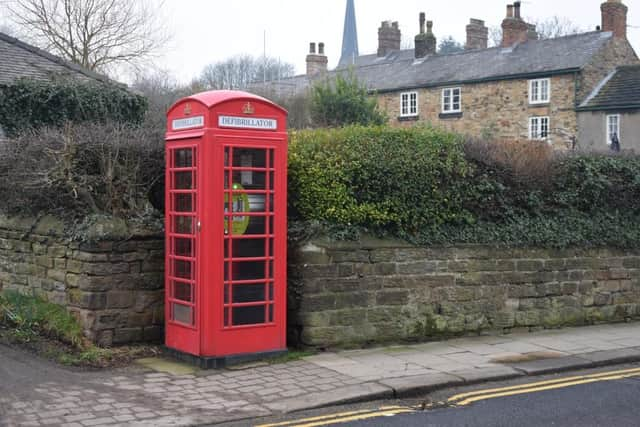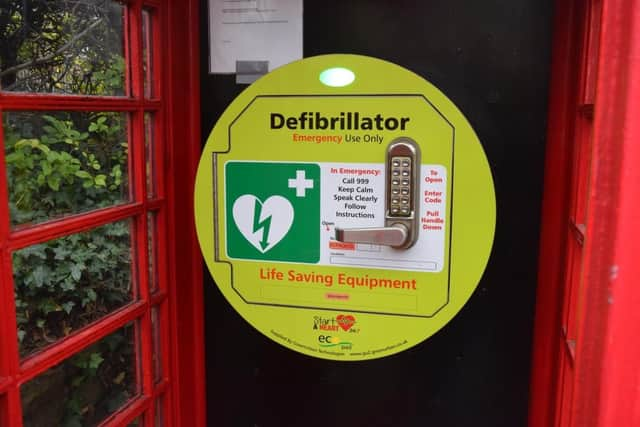Get your hands on an iconic BT red phone box as the kiosks approach their 100th birthday
and live on Freeview channel 276
Architect Sir Giles Gilbert Scott designed the first incarnation of the famous red phone box for a competition in 1924.
In recent years, however, with 98 per cent of the adult population now using a mobile phone, and significant improvements to mobile coverage, there has been a huge decline in the usage of payphones across the UK.
Advertisement
Hide AdAdvertisement
Hide AdThere are now around 20,000 remaining working payphones across the UK, around 3,000 of which are in traditional red kiosks. The number of phone boxes peaked in the 1990s at around 100,000.


BT is now urging communities to continue to take advantage of its kiosk adoption scheme to help transform its underused red phone boxes into other purposes.
Since BT introduced its Adopt a Kiosk programme in 2008, more than 470 phone boxes have been taken on by communities across Yorkshire and the Humber for just £1 each.
Across the UK, more than 7,200 have been adopted so far. The kiosks can be adopted by registered charities, community councils and local authorities.
Advertisement
Hide AdAdvertisement
Hide AdRedundant phone boxes have been adopted and turned into a range of facilities over the years, from defibrillator units and libraries, to mini art galleries and local museums.


BT is continuing to review its remaining estate of payphones, removing those that are no longer being used, in line with rules set out by Ofcom. Ofcom revised its guidance last year on payphone removals, reflecting improvements made in mobile coverage and the number of calls made from individual payphones each year.
Michael Smy, Head of Street at BT, said: “With the vast majority of people now using mobile phones, and significant improvements to mobile coverage across the UK, we’ve continued to see a big drop in the number of calls made from payphones.
“That’s why we’re continuing to review our payphones estate, making sure we're prioritising the removal of those not being used, in line with Ofcom’s latest guidance.
Advertisement
Hide AdAdvertisement
Hide Ad“With the iconic red kiosk about to turn 100, it's a great opportunity to remind communities that would still like to retain their local kiosk to take it on for just £1 through our Adopt a Kiosk scheme. We’ve already seen some great kiosk conversions across the UK that have become valuable community assets.”
The Community Heartbeat Trust, a charity which provides defibrillators, has worked with BT to adopt kiosks since 2009. They have helped install more than 700 defibrillator stations in adopted phone boxes across the UK.
The kiosk defibrillators installed by the Community Heartbeat Trust have been used on several occasions to save lives across the UK, including in the rural village of Tidenham in Gloucestershire in 2021.
A group walking in the in the Forest of Dean was able to save the life of a group member who’d suffered a heart attack, thanks to finding a nearby phone box defibrillator installed by the Community Heartbeat Trust.
Health research suggests that in rural areas, you are 30 per cent less likely to survive an out-of-hospital cardiac arrest.
Martin Fagan, National Secretary of the Community Heartbeat Trust charity, said: “BT's kiosk adoption scheme has given us a great opportunity to increase the number of defibrillators across the UK in recent years. To install defibrillators in disused phone boxes is ideal, as they're often in the centre of villages and towns and it means the iconic red phone box can remain a lifeline and focus for the community.
“The take-up has been fantastic, and we hope more communities will look to adopt the remaining kiosks and choose our help to save more lives across the UK, particularly in rural communities.”
Comment Guidelines
National World encourages reader discussion on our stories. User feedback, insights and back-and-forth exchanges add a rich layer of context to reporting. Please review our Community Guidelines before commenting.